In a story full of admissions, I must start by confessing I had been thinking of ways to not fly the same old hour over and over. As the gods punish by giving what you ask for, this was really tempting fate.
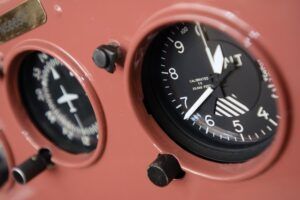
Right on cue came an opportunity to be guided into a certain private airfield not far away at all. Typically I’ll consider any half sane adventure, but this nicely paved strip is a little out of the ordinary. It perches on the side of a hill, so it runs steeply up and down. It’s not narrow, but it sure isn’t wide. The surrounding terrain is hilly, with canyons and plateaus. Getting there means getting sort of intimate with modestly higher terrain to the sides. Landing uphill, it takes a Bearcat to outclimb the rising terrain, so in a typical puddle jumper an early commitment is required. There are big Godzilla-calling electric wires and towers right alongside the approach, along with tricky, rolling crosswinds depending how far down the runway you are. Plus, because it’s a one-way runway, you’re bound to have a tailwind either coming or going. Usually arriving.
I’ve been flying in this area since 1973 and for reasons you might think reasonable—even more than it being a private airport with PPR (prior permission required)—I had never so much as taken a close approach to it.
I’d visited this place by car several years ago and thought it looked challenging, as in, “Um, doable, but I’m glad I’m not doing it today.”
And so the opportunity was offered and I thought it was time to give it a go. I’d take the little Cessna 140A with its low landing speed and good visibility, as guiding the blind Starduster in there at 100 mph would clearly exceed my thrill threshold. My guide was a resident at the hillside airport, flies a taildragger and did his stint as a CFI, all reassuring credentials for my first pilgrimage.
Naturally there were delays. We’d say next Tuesday and then something would come up, and just as naturally, after several delays, when we finally got around to the job things were far from ideal. I’d been working and not flying much, so while not a rusty pilot, I wasn’t fully tuned up. I especially hadn’t been flying the little Cessna much, spending more time in the Starduster, and those two airplanes are about as similar as chalk and cheese. I was lightly distracted by other duties that day; nothing major, but as we all know, the gremlins and gotchas thrive on mental plankton rather than feasting on big red-flag events. The Cessna, which offers anemic power, also sports long-range tanks and while nowhere near full, I would have preferred minimal fuel to save weight. Along those lines, I’m a lightweight only in Sumo competitions, and my guide pilot was a normal, full-grown adult male. With such weight on board climb performance would be at the terrestrial-loving end of the Cessna’s already desultory performance curve. Most bothersome was we ended up flying right around 2–3 p.m. on a bluebird spring weekday; that gave us the expected energetic atmosphere complete with blustery winds.
The good news was the temperature was cool and the airport elevation low, so density altitude was nice and thick, better than we’re used to in our warm corner of the nation. Visibility was superb. That, and I had more wind, pilot, weight and unfamiliarity excuses than I could hope to use. As an old car and bike racer, I learned long ago a good excuse is a powerful placebo for lack of skill, at least while in the hangar drinking beer.
Into the Blue
So we were off, bumping along in the roiling spring air. Step one was learning the first of two specialized approaches. For brevity’s sake let’s say both are roughly question-mark shaped to avoid various terrain, wire and complaint-happy neighbors. Maintaining eyeballs on the runway through the approach is not possible, so gauging height above the tilted runway during the approach didn’t seem to be happening. This led to some confusion the more conscious parts of my brain kept in the background as if it were something to handle later when there was time to think. Some brain. Plus, there was the nonstop verbal instruction coming from the right seat and the ground was rising and falling anyway, rendering my personal Mk.1 visual altimeter feeling uncalibrated. This led to a greater reliance on the verbal instructions than might be optimal, similar to a primary student trying to think and act in three axes for the first time while drinking from the instructor’s verbal firehose all the while.
At what turned out to be the appropriate place the little voice was saying go around, but the voice in the headphones was saying, “Good, just a little high, so full flaps, square up on those electric lines, etc., etc., keep with it” and so on. So I kept going.
As you’ve by now divined, I delivered us to the runway high as a college pledge and hotter than a Champion electrode, at least in little Cessna terms. But by the time this runway is made, the rising terrain and flaccid climb performance means no go-around is possible. I was committed, or more accurately, that little glider of a Cessna simply wouldn’t come down, nor would it go up, and my goose was cooked and I knew it.
The instant I came around the final corner and got a good look at the runway I instantly flashed on those hundreds of times I’d overcooked a corner on the racetrack and how the nauseating stomach tightening, time compression and realization that you were in for a ride through the tall, green and uncut were exactly the same in either cockpit. It was inevitable. No matter how quickly or smoothly you applied the controls, this one was going to hurt. You were in an accident that simply hadn’t arrived yet. The big difference is, in the airplane you have much longer to think about it.
Almost simultaneously I knew I had wrecked my plane, ruined my record and put my friend in great peril and my best hope was we wouldn’t get too hurt. This was also followed by that same racetrack sensation of, “You idiot, you really screwed the pooch on this one, but if you try really hard you might get away with some of it.” And then, far in the background I could hear Bob Hoover softly intoning all the way from Tennessee to “fly the @&%$#@! as far into the crash as possible.”
Making Lemonade
At this point we were at the intended aim point halfway up the runway, rocketing along in a tailwind and still many feet in the air directly under us and perhaps level with the departure end. The latter is marked by a chain-link fence, a low embankment and uphill from there, so it can be the departure end in all meanings of the word. I already had one rudder pedal all the way down and the yoke skewed to match for a long time, along with all the flaps, apologetically ineffectual little boards that they might be. The carb heat was out, the throttle long closed. The only thing was to take the speed penalty and force the nose down, make a heroic round-out and flare to get the tires on the pavement and pray uphill gravity and Cleveland brakes could lessen the destruction.
Not helping at all was the wind. We had a windsock-stiff tailwind, call it 10 knots and gusts, along with a washing-machine worthy rotor my guide announced as normal halfway down the runway at this airport. So I looked like a chimpanzee boxing the controls in hopes of a big banana. Meanwhile our world view heaved and hoved in the windshield, the little Cessna banking and banging to its wrinkled end.
I was also aware the farther “down” the runway (which is also “up” the hill), the stronger the tailwind was getting. At least that made sense, as the higher up the hill the more exposed we were. Just wonderful.
So I pushed her down, flared like a big dog and, running out of skill, got a healthy bounce. Coming down for the second impact I thought to apply enough up elevator to both lessen the grief on the gear while not applying so much elevator as to command another rise. Luckily, my experienced guide in the right seat knew better, and at exactly the right moment during the second, er, alightment, grabbed his yoke all the way aft. This planted the tail and in a case of aerodynamic complexity I’m still not sure about, apparently stalled the wing and presented the top of the airplane to the tailwind to plant us on the asphalt. That was the first bit of good news in a while.
Very little runway was left and the tailwind was pushing the tail right and the nose left. I ignored the looming fence and making like F. Astaire on the pedals and brakes kept us a yard from the grass on the left and neither locked up a tire or put the whole thing over on its nose while braking for all I dared. In another bit of good news I didn’t at first believe, the uphill really kicked in, and while it was directionally askew, we were shedding speed like a Maine Coon cat in July.
We stopped seemingly one plane length from the chain link.
“We’ll, that was good,” from the right seat. “Let’s get turned around and take off downhill into the wind, then shoot that other approach.”
The second time around I did what I should have been doing on the first. Namely, I flew my plane. Job one was to get the little tyke slowed down well away from the runway. On the first attempt I was busy spotting waypoints on the ground and forgot to get the plane on speed and configured to land before starting the attempt. On the second approach I used the altimeter to gauge height relative to the runway, not the undulating ground. I realized my guide pilot didn’t know just how reluctant the 140A was to give up speed or altitude, so I doubled down to never let it have any. I knew the rotor at midfield was a bother, but not my master. And if I put the airplane on the ground about halfway up the hill at the correct speed, it would be no big deal, and it wasn’t. Plus, it was a great reminder that the little voice is never wrong and a go-around is a thing of beauty performed by master pilots. All I had to say on the first approach was, “This is going to be an approach followed by a go-around.” When you’re in command you can do things like that.
My final admittance is there wasn’t a kit aircraft in this story, but as I came close to reducing a Cessna to kit form, I’m counting it good this time.


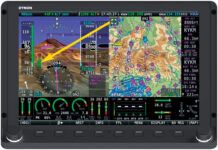
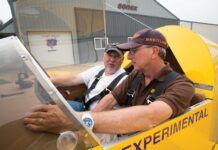
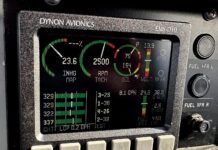
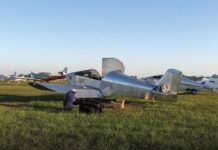

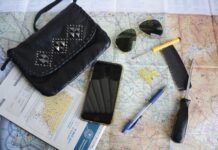
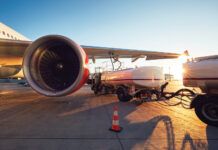
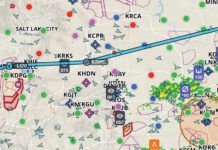
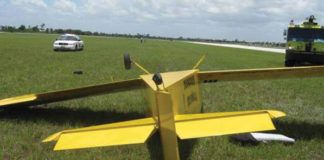
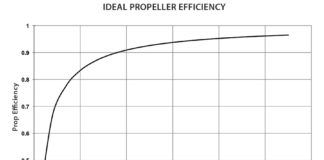
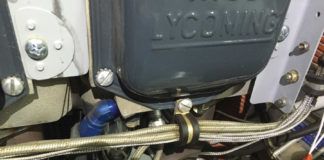
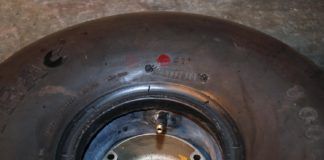
I’m still laughing at the picturesque telling, My mind recalled my first experience with tail dragger training;in a Cub on a crosswind wheel landing that switched to a downwind in a grass field surrounded by barbed wire fence ( Cow pasture) at the ripe old age of 68….it didn’t end as well with a hard left to avoid going over the embankment at the end of the “runway”. Barbed wire and other minor damage ensued. I was not laughing then…
So far, I’ve been OK in an airplane (only 76 hours), but Tom’s description of uncommanded rotation around the yaw axis in a racing car was spot-on.
When I spin my Formula Ford, it’s time dilation, embarrassment, a flash of hope that there’s nothing solid out in the weeds, and remembering to lock up the wheels and push in the clutch…all before the rear of the car passes me!
The “Spins Prohibited” placard on my steering wheel is apparently INOP.
Great yarn Tom. I was right there with you, all the way down to the chain link fence.
Brings back memories of a similar experience in my old 172 on a farm strip when, unable to go round due to the terrain I learned the effectiveness of braking up hill. Also reminded me of an experience of landing at an unfamiliar rural strip that didn’t match what I’d been advised, having brakes fail on my RV6 and running off the strip, through a spoon drain, straddling a rock and through the foot high regrowth, finally stopping about 3 metres short of another aircraft in the parking area. Like your story both events could (probably should) have resulted in a long and expensive absence from flying but remarkably neither event caused so much as a scratch. Both taught important lessons though.
Thanks for commenting, guys. Nice to know someone is reading.
As for spinning the Formula Ford, James, you aren’t kidding, those things spin like Tiddlywinks and in the confusion it’s easy to forget quite what to do as you said. The English say it best (and shortest) with “both feet in” when spinning. One foot on the clutch, the other locking up the brakes and you’ll spin in a straight line starting from wherever you remembered to lock ’em up. Which for me is about when I’m strapping the wreckage onto the trailer and re-thinking what I should have done.
Jerry, sorry you got into the wire, and I got a giggle out of Mr. Dufty’s Wild Ride. Straddling rocks…
Captivating story, and great writing. I bet most pilots have had that visceral feeling of a dismal end, and learned a lot along the way. Yes, I have a similar story, but surely can’t follow your storytelling. Thank you!